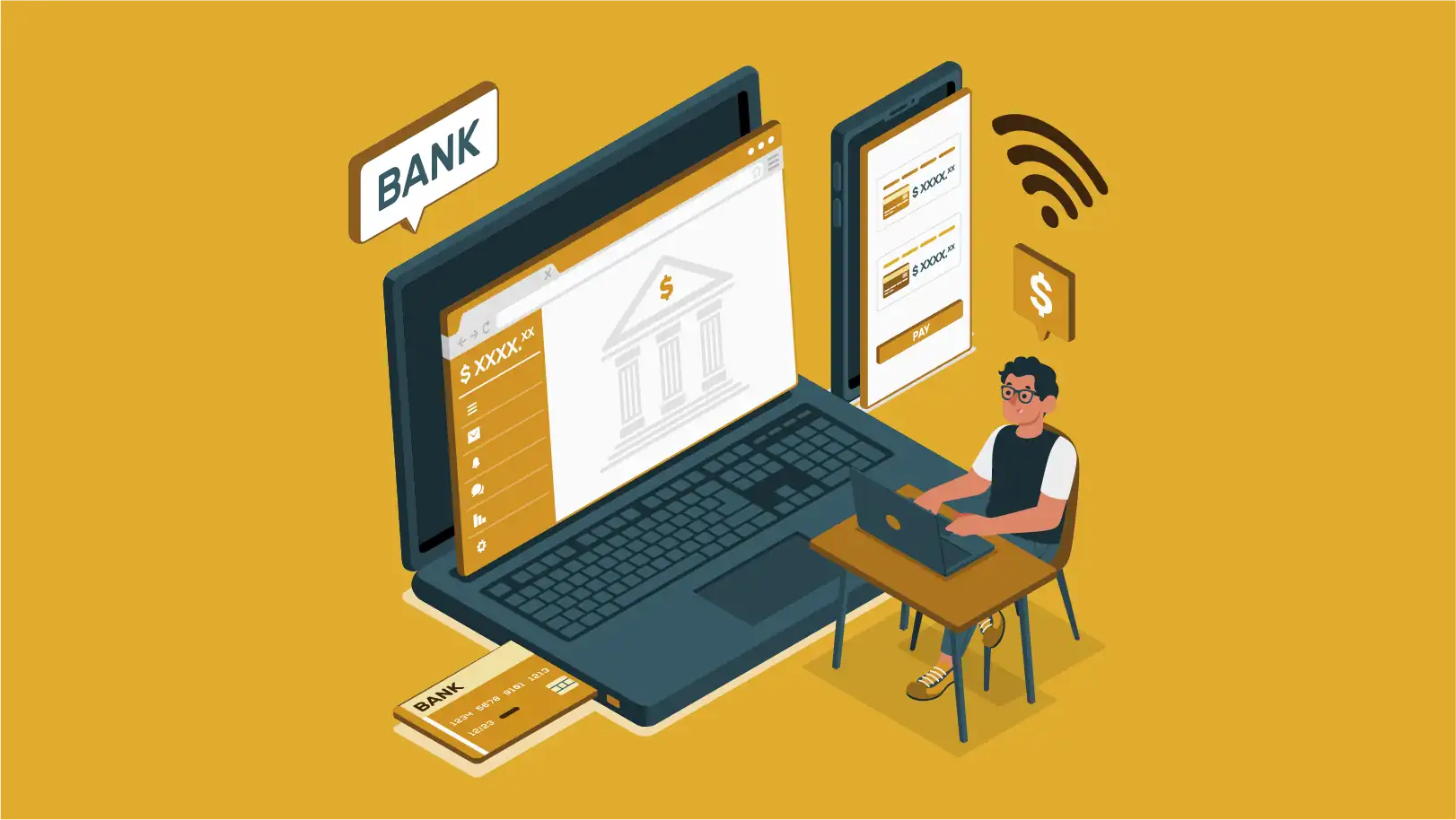
Automated Market Makers (AMMs) are essential for trading without needing traditional order books. Curve Finance is a popular platform that uses a special AMM designed for stablecoin trading. This guide will explain how to use Curve’s AMM in a decentralized exchange (DEX) in simple terms and highlight key concepts related to DEX Development and other relevant services.
What is Curve and How Does It Work on a DEX?
Curve is a Decentralized Exchange (DEX) designed specifically for trading stablecoins, like USDT, USDC, and DAI. Unlike traditional exchanges that use order books to match buyers and sellers, Curve uses something called an Automated Market Maker (AMM). This AMM is a special type of algorithm that helps people trade stablecoins directly with each other without needing a middleman.
Imagine you want to trade one stablecoin for another on Curve. Instead of finding a buyer or seller through an order book, Curve’s AMM calculates the exchange rate automatically based on the current liquidity in its pools. These pools are made up of stablecoins provided by users, who earn fees in return. The AMM adjusts the rates in real time to ensure that trades happen smoothly and with minimal price changes, known as slippage. Curve simplifies stablecoin trading by using its AMM to handle transactions efficiently, making it easier and cheaper for users to swap stablecoins on a decentralized platform.
Curve Help with DEX Software Development Services
Curve can be very helpful when developing software for decentralized exchanges (DEXs). If you’re building a DEX, integrating Curve’s Automated Market Maker (AMM) can enhance your platform by offering efficient and low-cost stablecoin trading. Curve’s AMM is designed to handle stablecoins smoothly, reducing trading fees and price changes.
By using Curve’s technology, you can provide your users with a reliable and user-friendly experience. Curve’s AMM helps manage liquidity and ensures that trades happen quickly and with minimal slippage. This means that your DEX can offer better trading conditions and attract more users. Incorporating Curve’s AMM into your Decentralized Exchange Router and DEX Software Development Services can make your platform more effective and competitive, helping you build a better trading environment for stablecoin transactions.
What Makes Curve Different from Other DEXs?
Curve Finance stands out from other decentralized exchanges (DEXs) due to its unique focus and technology. Here’s what makes Curve different:
-
Specialization in Stablecoins
Unlike many DEXs that handle a broad array of cryptocurrencies, Curve Finance focuses primarily on stablecoins. Stablecoins, such as USDT, USDC, and DAI, are designed to maintain a stable value relative to a fiat currency like the US dollar. Curve’s specialization in these assets allows it to optimize trading conditions specifically for stablecoins, offering a more tailored and efficient trading experience for users who are trading assets that are inherently less volatile.
-
Unique AMM Formula
Curve employs a unique Automated Market Maker (AMM) Formula that is distinct from those used by other decentralized exchanges. This formula is specifically designed to handle stablecoins by reducing the impact of price changes and minimizing slippage. Slippage is the difference between the expected price of a trade and the actual price when the trade is executed. Curve’s AMM formula ensures that trades are executed with minimal price deviations, which is crucial for maintaining the stability that stablecoins promise.
-
Low Slippage
One of Curve’s major advantages is its ability to offer low slippage. In traditional trading environments, slippage can be a significant issue, especially when executing large trades. Curve’s AMM is optimized to reduce slippage, which means that the price you see when you place an order is close to the price you get when the order is filled. This is particularly important for stablecoins, where even small price changes can be problematic for users seeking stability.
-
Efficient Liquidity Pools
Curve’s liquidity pools are designed to handle large volumes of stablecoin transactions efficiently. These pools are structured in a way that minimizes the impact on prices, even when large trades are executed. This efficient management of liquidity ensures that users can trade stablecoins with minimal disruption and at predictable prices. Liquidity providers who contribute their stablecoins to these pools are rewarded with a share of the trading fees, making it an attractive option for those looking to earn passive income.
-
Customizable Pools
Curve offers the flexibility to create and manage customized liquidity pools. Users can set specific parameters for these pools, such as the types of stablecoins included, the fee structure, and other operational details. This level of customization allows users to tailor their liquidity pools to meet specific needs or preferences, providing greater control over how their assets are managed and traded.
-
Low Fees
Curve’s focus on stablecoin trading allows it to offer competitive fees compared to other exchanges. The combination of low slippage and efficient liquidity management translates into lower transaction costs for users. This is especially beneficial for frequent traders and liquidity providers who are looking to minimize their trading expenses.
-
Yield Farming Opportunities
In addition to trading, Curve provides opportunities for yield farming. Users can earn rewards by providing liquidity to Curve’s pools. These rewards come from the trading fees generated by the pools and additional incentives that Curve offers. Yield farming adds an extra layer of appeal for users who want to maximize their returns on stablecoin holdings.
-
Integration with Other Platforms
Curve has integrated with various other DeFi platforms and services. This interoperability allows users to leverage Curve’s liquidity across different platforms and enhances the overall functionality of the DeFi ecosystem. By integrating with other services, Curve extends its reach and utility, making it a valuable component of the broader DeFi landscape.
Why is Curve a Popular Choice for Stablecoin Trading?
Curve Finance is a popular choice for stablecoin trading because it’s specifically designed to handle stablecoins like USDT, USDC, and DAI efficiently. Unlike other exchanges that deal with a wide range of cryptocurrencies, Curve’s focus on stablecoins means it can offer better prices and lower fees for these types of trades. Its unique Automated Market Maker (AMM) formula minimizes price changes and slippage, which helps keep trades smooth and predictable. Additionally, Curve’s liquidity pools are set up to handle large volumes without affecting prices much, making it easier and cheaper for users to trade stablecoins.
As decentralized finance continues to evolve, platforms like Curve are also integrating with Multi-Chain DEX Routers , allowing users to access liquidity across multiple blockchains seamlessly. This improves the efficiency of stablecoin trading even further, giving users the benefits of cross-chain functionality while maintaining low fees and stable pricing. This combination of low fees, efficient trading, and stable prices makes Curve a favored platform for those looking to trade stablecoins effectively.
Steps to Use Curve’s Automated Market Maker on a DEX
Here’s a more detailed guide on how to use Curve’s Automated Market Maker (AMM) on a Decentralized Exchange (DEX), explaining each step thoroughly:
-
Understand Curve’s AMM
Curve Finance operates with a unique Automated Market Maker (AMM) designed specifically for stablecoins. Unlike traditional exchanges that use order books, Curve’s AMM algorithm helps manage trades based on liquidity pools and a custom formula. This formula is optimized to reduce price slippage and ensure that trades between stablecoins, which are supposed to maintain a constant value, are executed efficiently and with minimal price deviation.
-
Set Up Your Wallet
To interact with Curve’s AMM, you need a compatible cryptocurrency wallet. Popular wallets include MetaMask, Trust Wallet, and Coinbase Wallet. These wallets are compatible with Ethereum and other networks where Curve operates. Install the wallet of your choice, set up your account, and ensure it’s connected to the right blockchain network. For Ethereum-based Curve pools, make sure your wallet is set to the Ethereum network.
-
Connect to Curve
Access the Curve Finance website or a DEX that integrates Curve’s AMM. Look for the “Connect Wallet” button, usually located at the top right corner of the page. Click this button and follow the prompts to link your wallet with Curve. This connection allows you to interact with the platform and perform transactions directly from your wallet.
-
Choose Your Trading Pair
Curve supports a variety of stablecoin trading pairs. Navigate to the trading section and select the pair you wish to trade. For example, if you want to trade USDC for DAI, choose the USDC/DAI pool. Curve’s user interface will display all available trading pairs, along with relevant information like current rates, liquidity, and fees.
-
Review the Pool Details
Before executing a trade, it’s important to review the details of the chosen pool. Check the liquidity, which refers to the total amount of stablecoins available in the pool. Higher liquidity generally means better trade execution with less impact on price. Also, review the fees associated with the pool, as these will affect your overall trading costs. Curve typically charges a small fee on trades, which is distributed among liquidity providers.
-
Execute the Trade
Once you’re ready to trade, enter the amount of the stablecoin you want to exchange. The platform will display the equivalent amount of the other stablecoin you will receive, accounting for the current exchange rate and any fees. Review this information carefully. If everything looks good, confirm the trade. Your wallet will prompt you to authorize the transaction. Confirm the transaction in your wallet, and the trade will be processed. The exchanged stablecoins will appear in your wallet once the transaction is complete.
-
Adding Liquidity (Optional)
If you want to earn fees by providing liquidity, you can add your stablecoins to a Curve pool. Navigate to the “Deposit” or “Add Liquidity” section, select the pool you wish to join, and deposit your stablecoins. As a liquidity provider, you’ll earn a share of the trading fees generated by the pool, proportional to your contribution. You can withdraw your funds at any time, along with any earned fees, by visiting the “Withdraw” section and following the prompts.
-
Monitor Your Trades
After executing a trade or adding liquidity, keep track of your transactions. Curve’s platform provides real-time updates on trade execution and liquidity pool performance. You can view your recent trades, monitor your LP token balance, and check for any earned rewards. Regularly reviewing these details helps you stay informed about your trading activities and liquidity contributions
-
Withdraw or Manage Liquidity
If you’ve added liquidity to a Curve pool, you have the option to manage or withdraw your funds. Go to the “Remove Liquidity” section on Curve’s platform. Select the pool from which you want to withdraw and enter the amount of liquidity you wish to remove. Confirm the withdrawal transaction. You’ll receive your stablecoins back along with any rewards earned from providing liquidity. Managing liquidity involves monitoring the pool’s performance and making adjustments as needed.
-
Stay Informed
Keep up with the latest updates from Curve Finance. Follow Curve’s official blog, social media channels, and community forums to stay informed about new features, changes, or improvements. Staying updated helps you make informed decisions about your trading and liquidity management strategies.
Curve for Your DEX Development Projects
If you’re working on developing a decentralized exchange (DEX), integrating Curve’s technology can significantly benefit your project. Curve Finance offers a specialized Automated Market Maker (AMM) designed for stablecoins, making it an excellent choice for enhancing your DEX. By incorporating Curve’s AMM, you can provide efficient and low-cost trading for stablecoins on your platform.
Curve’s unique formula reduces slippage, meaning that trades will be executed at prices closer to what users expect, which is crucial for maintaining stability. Additionally, Curve’s liquidity pools are optimized to handle large volumes of trades smoothly, attracting more users to your DEX. Using Curve’s technology can make your DEX Development Services more competitive and user-friendly, offering a better trading experience for stablecoin transactions.
Earn Rewards on Curve
Earning rewards on Curve Finance is a straightforward process if you provide liquidity to its pools. When you add your stablecoins to Curve’s liquidity pools, you help facilitate trades on the platform. In return, you receive rewards in the form of a share of the trading fees generated by the pool. These rewards are proportional to the amount of liquidity you’ve provided. Additionally, Curve often offers extra incentives, such as bonus tokens, to liquidity providers. To start earning rewards, simply choose a liquidity pool on Curve, deposit your stablecoins, and keep track of your earnings. It’s a great way to put your stablecoins to work and earn extra income while supporting efficient trading on the platform.
How Can Nadcab Labs Help with Your Curve DEX Setup?
Nadcab Labs can greatly assist you with setting up a Curve-based Decentralized Exchange (DEX). They offer expertise in integrating Curve’s Automated Market Maker (AMM) into your platform, ensuring smooth and efficient stablecoin trading. Nadcab Labs can help you design and deploy the right liquidity pools, customize the AMM settings to suit your needs and manage the technical aspects of integration. Their team provides end-to-end support, from initial planning and development to ongoing maintenance and optimization. By working with Nadcab Labs, you can leverage their experience to create a robust and user-friendly DEX that benefits from Curve’s advanced trading technology.






